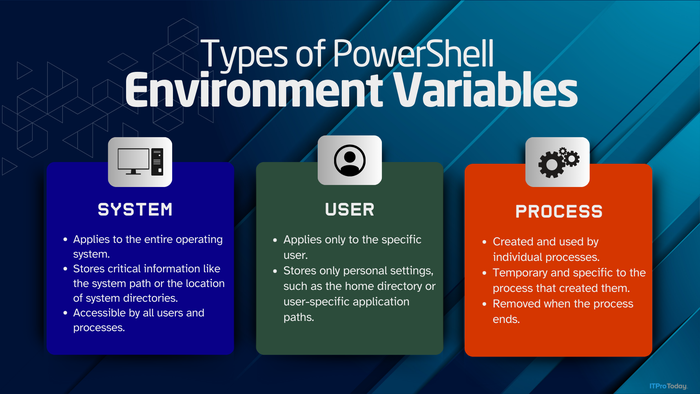Beyond the Basics: Advanced Linux Hardening TechniquesBeyond the Basics: Advanced Linux Hardening Techniques
This guide explores advanced hardening techniques, including MAC frameworks, network security enhancements, proactive vulnerability management, container security, and the use of AI for threat detection.

The world of global cyber threats is continuously shifting and growing more complex, with APT groups and cybercriminals finding novel ways to exploit legitimate applications, software packages, and code vulnerabilities. To stay secure, organizations must ensure their systems are protected from both vanilla and sophisticated attacks.
Foundational practices like firewalls, strong passwords, multi-factor authentication, and regular updates are vital for Linux systems. However, given the evolving threat landscape, Linux system administrations must go beyond the basics. In addition to threat hunting, red teaming, and SIEM/SOAR and XDR tools, they should implement advanced protections to ensure system security.
This article examines advanced Linux hardening techniques to help organizations fortify their systems against sophisticated threats.
Implement Mandatory Access Control (MAC) for Advanced Application Security
Linux’s default discretionary access control (DAC) model can fall short in complex security scenarios. MAC models like SELinux (Security-Enhanced Linux) and AppArmor provide more granular control over how applications interact with the system.
Steps to set up SELinux
1. Install and activate SELinux
Install SELinux with the following terminal command:
sudo apt install policycoreutils selinux-basics selinux-utils -yIf SELinux is not enabled, edit the /etc/selinux/config and set SELINUX=enforcing.

Figure 1. Here is the command for installing SELinux on Ubuntu.

Figure 2. Navigate to the SELinux configuration file.

Figure 3. Set SELinux to enforce mode.
Activate SELinux using:
sudo selinux-activateReboot the system to apply changes.
2. Define custom SELinux policies
Use audit2allow to analyze SELinux denials and create custom policies. Custom policies ensure necessary actions are permitted while maintaining strict security.
3. Regularly audit SELinux logs
Review SELinux logs at /var/log/audit/audit.log to identify and address potential misconfigurations or security gaps.
Step to set up AppArmor
1. Check AppArmor status
Most modern Linux distributions come with AppArmor preinstalled. Use the following command to check its status:
sudo aa-statusIf AppArmor is not installed, install it using your distribution’s package manager. For example:
sudo apt install AppArmor2. Write and Enforce Policies
Create custom profiles using tools like aa-genprof to define and enforce application-specific restrictions.

Figure 4. AppArmor and Genprof make it easy to manage policies directly from the command line.
Kernel Hardening: Protect the Core of Your System
The Linux kernel is a frequent target for attackers seeking to exploit code vulnerabilities. As a result, you should prioritize kernel hardening.
Enhance kernel security with grsecurity
Grsecurity enhances the kernel’s security by introducing features like Role-Based Access Control (RBAC) and memory corruption defenses.
Obtain the grsecurity patch and apply it to the Linux kernel source.
Compile the patched kernel and boot into it.
Use gradm to configure and enforce RBAC policies.
Control system calls with seccomp
Seccomp (Secure Computing Mode) reduces the attack surface by limiting the system calls an application can make.
Implementation steps:
Identify the system call requirements of applications using tools like strace.
Configure seccomp policies using tools like libseccomp.

Figure 5. Strace simplifies identifying system call requirements directly from the command line.
Advanced Network Security Measures for Linux Systems
Use advanced network security measures to bolster your systems.
Leverage iptables and nftables for complex rulesets
While simple firewall rules are essential, advanced configurations can significantly enhance system security.
Example: Rate limiting SSH connections
Limit SSH connection attempts to reduce the risk of brute-force attacks:
iptables -A INPUT -p tcp --dport 22 -m conntrack --ctstate NEW -m recent --setiptables -A INPUT -p tcp --dport 22 -m conntrack --ctstate NEW -m recent --update --seconds 60 --hitcount 5 -j DROP
Figure 6. The iptables documentation is comprehensive, making it a user-friendly tool for firewall configuration and management.
Secure Network Traffic and VPNs With Encrypted Communications
Encryption tools like OpenVPN, WireGuard, or IPsec secure communications between clients and servers.
Setting up WireGuard
Follow these steps to configure WireGuard:
1. Install WireGuard:
sudo apt/yum install wireguard2. Edit the configuration file at /etc/wireguard/wg0.conf using your preferred text or code editor.
3. Activate the WireGuard service:
sudo systemctl enable wg-quick@wg0
Proactive Vulnerability Management for Continuous Protection
Automated scanning tools, such as OpenSCAP and Lynis, can help you manage vulnerabilities proactively.
Setting up OpenSCAP
Use the following command to configure OpenSCAP:
sudo oscap xccdf eval --profile xccdf_org.ssgproject.content_profile_pci-dss /usr/share/xml/scap/ssg/content/ssg-ubuntu1804-ds.xmlAutomate Patch Management To Ensure System Integrity
You can automate patching using tools like unattended-upgrades. You can also integrate unattended-upgrades with configuration management tools such as Puppet, Ansible, or Terraform for enhanced automation and control.
Strengthen Container Security
Containers introduce unique security challenges, requiring proper configuration to prevent vulnerabilities.
For a detailed guide on securing Linux containers, check out my article: 10 Ways To Harden Your Linux Containers Against Attacks
Hardening Docker containers against attacks
Docker is a popular choice for containerization. Here are some key steps to harden Docker:
Run containers using non-root users.
Enable AppArmor or SELinux for containers.
You can use the following command to enable AppArmor:
docker run --security-opt apparmor:docker-default Implementing image scanning for vulnerabilities
Use tools like Trivy or Docker Content Trust to scan images for weaknesses.
Using Pod Security Standards (PSS)
If you use Kubernetes, enforce Pod Security Standards (PSS) to define policies like restricting privileged containers.
Advanced Logging, Monitoring, and Threat Detection for Linux
Set up centralized logging to aggregate logs in a Security Incident and Event Monitoring (SIEM) tool, such as the ELK Stack (Elasticsearch, Logstash, and Kibana) or Graylog, for simplified monitoring and incident response.
For centralized logging with ELK Stack, configure rsyslog to forward logs to the ELK Stack. Use Kibana’s web UI to visualize and analyze the data.
Similar SIEM systems follow the same setup: Configure the tool to ingest logs from endpoints and servers, then use its query language for analysis and threat hunting.
Deploying real-time instruction detection
Deploy intrusion detection tools like OSSEC or Wazuh for file integrity monitoring and intrusion detection.
Implementing Wazuh
Install the Wazuh agent and manager using the package manager tool.
Configure the agent to monitor and forward logs to the Wazuh manager.
Integrate Hardware and Physical Security Controls
Integrating physical and hardware-level controls can significantly improve system hardening in high-risk environments.
Secure Boot and Trusted Platform Module (TPM)
Secure Boot: Enable Secure Boot in BIOS/UEFI to ensure the system boots only from trusted software.
TPM: Use TPM for cryptographic operations and secure key storage.
Hardware-based encryption
Deploy Hardware Security Modules (HSMs) or processors like AMD SEV or Intel SGX to secure sensitive workloads.
Enhanced Authentication and Access Controls
Implement advanced multi-factor authentication applications such as Google Authenticator or, ideally, physical FIDO-compliant security tools.
Setting up Google Authenticator
1. Install the PAM Module for Google Authenticator:
sudo apt install libpam-google-authenticator2. Configure it in the /etc/pam.d/sshd file.
Just-in-Time access
Use tools like HashiCorp Vault to grant temporary credentials for accessing sensitive systems.
AI and Machine Learning for Advanced Threat Detection
AI and machine learning can predict and mitigate sophisticated attacks. You can enhance threat detection capabilities using tools like CrowdSec and SIEM systems such as Splunk and Qradar that integrate AI.
Regular Penetration Testing, Red Teaming, and Threat Hunting
By regularly conduct penetration testing, red teaming, and threat hunting, you can uncover hidden vulnerabilities and detect attackers that may have breached the system. Many SIEM tools support threat hunting with query languages like Splunk Query Language and Kusto Query Language.
Main Takeaway
The threats to Linux systems are becoming increasingly sophisticated. To stay ahead of attackers, administrators must implement basic security controls with advanced hardening techniques to protect systems and networks effectively.
About the Author
You May Also Like








.jpg?width=700&auto=webp&quality=80&disable=upscale)
